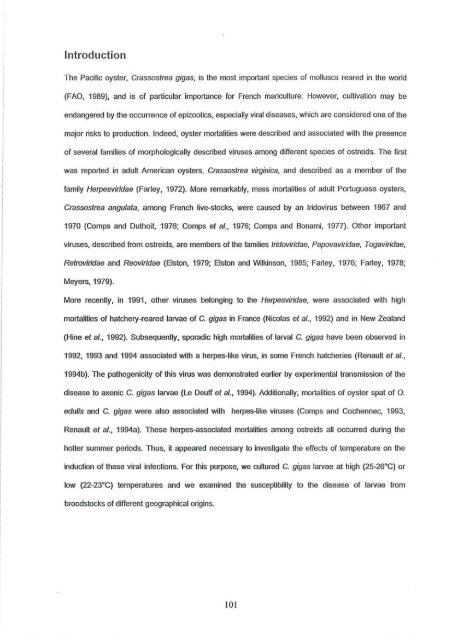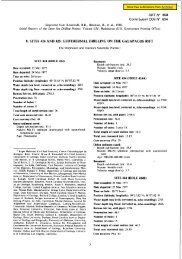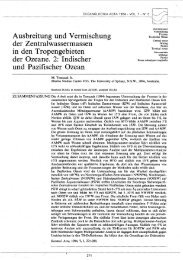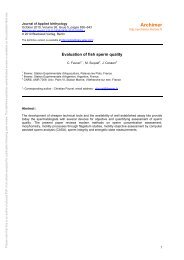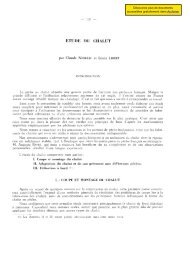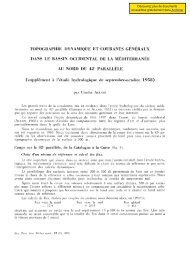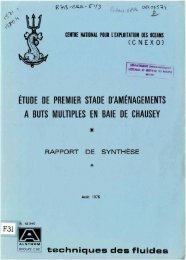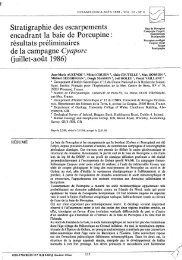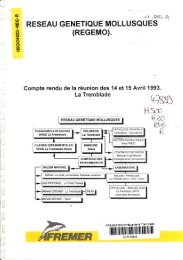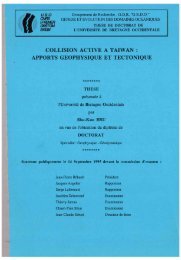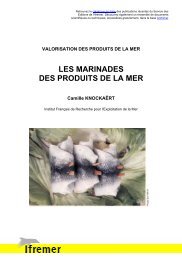Contribution à l'étude de virus de mollusques marins apparentés ...
Contribution à l'étude de virus de mollusques marins apparentés ...
Contribution à l'étude de virus de mollusques marins apparentés ...
Create successful ePaper yourself
Turn your PDF publications into a flip-book with our unique Google optimized e-Paper software.
Introduction<br />
The Pacific oyster, 'Crassostrea gigas, is the most important species of molluscs reared in the world<br />
(FAO, 1989), and is of particular importance for French mariculture. However, cultivation may be<br />
endangered by the occurrence of epizootics, especially viral diseases, which are consi<strong>de</strong>red one of the<br />
major risks to production. In<strong>de</strong>ed, oyster mortalities were <strong>de</strong>scribed and associated with the presence<br />
of several families of morphologically <strong>de</strong>scribed <strong>virus</strong>es among different species of ostreids. The first<br />
was reported in adult American oysters, Crassostrea virginica, and <strong>de</strong>scribed as a member of the<br />
family Herpesviridae (Farley, 1972). More remarkably, mass mortalities of adult Portuguese oysters,<br />
Crassostrea angulata, among French live-stocks, were caused by an lrido<strong>virus</strong> between 1967 and<br />
1970 (Comps and Duthoit, 1976; Comps et al., 1976; Comps and Bonami, 1977). Other important<br />
<strong>virus</strong>es, <strong>de</strong>scribed trom ostreids, are members of the families lridoviridae, Papovaviridae, Togaviridae,<br />
Retroviridae and Reoviridae (Elston, 1979; Eiston and Wilkinson, 1985; Farley, 1976; Farley, 1978;<br />
Meyers, 1979).<br />
More recently, in 1991, other <strong>virus</strong>es belonging to the Herpesviridae, were associated with high<br />
mortalities of hatchery-reared larvae of C. gigas in France (Nicolas et al., 1992) and in New Zealand<br />
(Hine et al., 1992). Subsequently, sporadic high mortalities of larval C. gigas have been observed in<br />
1992, 1993 and 1994 associated with a herpes-like <strong>virus</strong>, in some French hatcheries (Renault et al.,<br />
1994b). The pathogenicity of this <strong>virus</strong> was <strong>de</strong>monstrated earlier by experimental transmission of the<br />
disease to axenic C. gigas larvae (Le Deuff et al., 1994). Additionally, mortalities of oyster spat of O.<br />
edulis and C. gigas were also associated with herpes-like <strong>virus</strong>es (Comps and Co'chennec, 1993;<br />
Renault et al., 1994a). These herpes-associated mortalities among ostreids ail occurred du ring the<br />
hotter summer periods. Thus, it appeared necessary to investigate the effects of tempe rature on the<br />
induction of these viral infections. For this purpose, we cultured C. gigas larvae at high (25-26°C) or<br />
low (22-23°C) temperatures and we examined the susceptibility to the disease of larvae Irom<br />
broodstocks 01 different geographical origins.<br />
101


